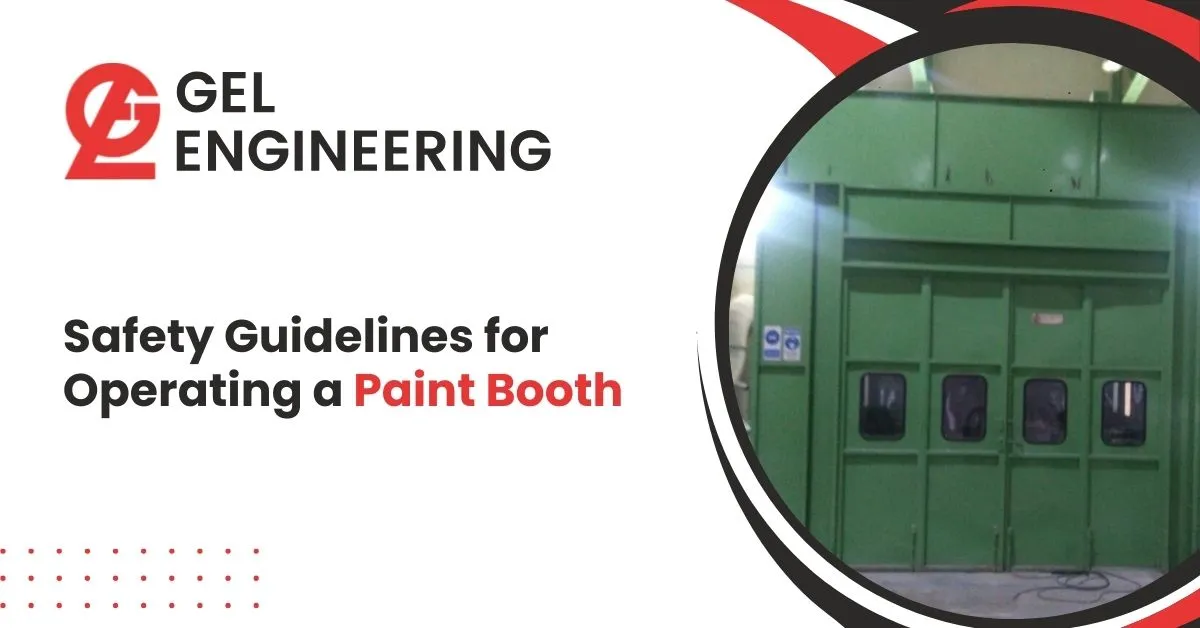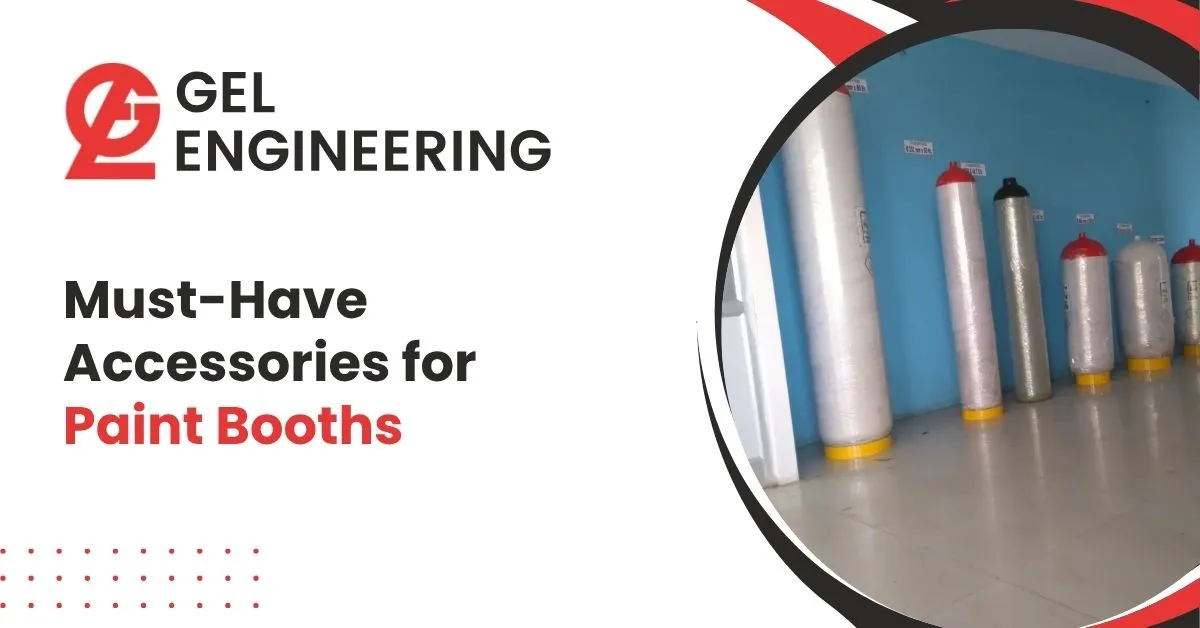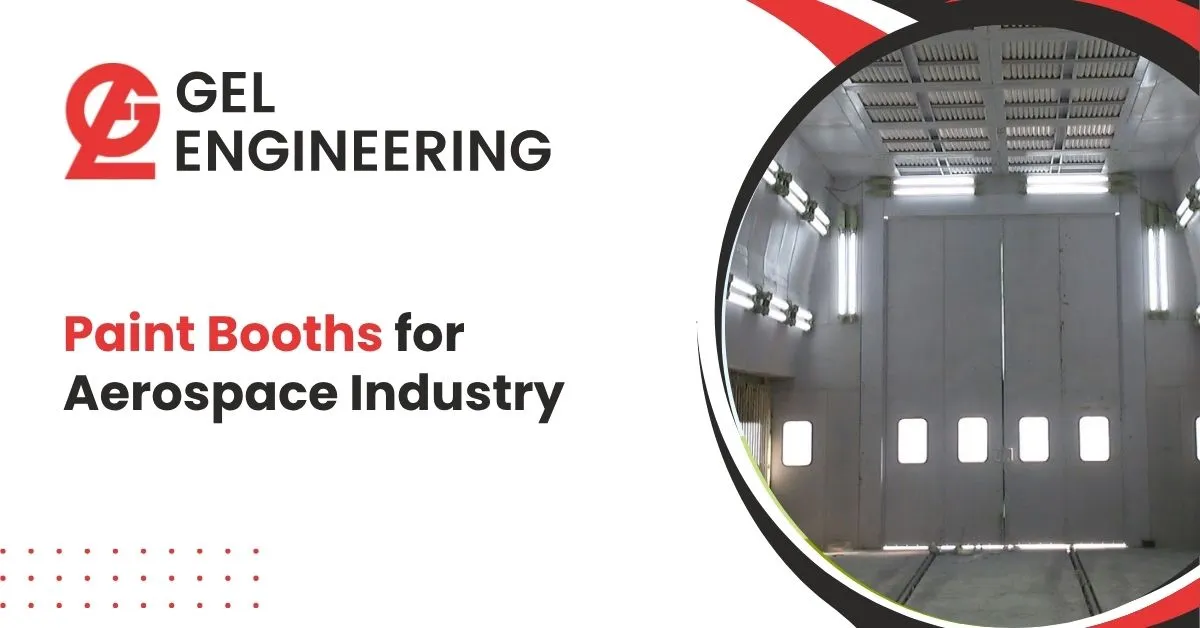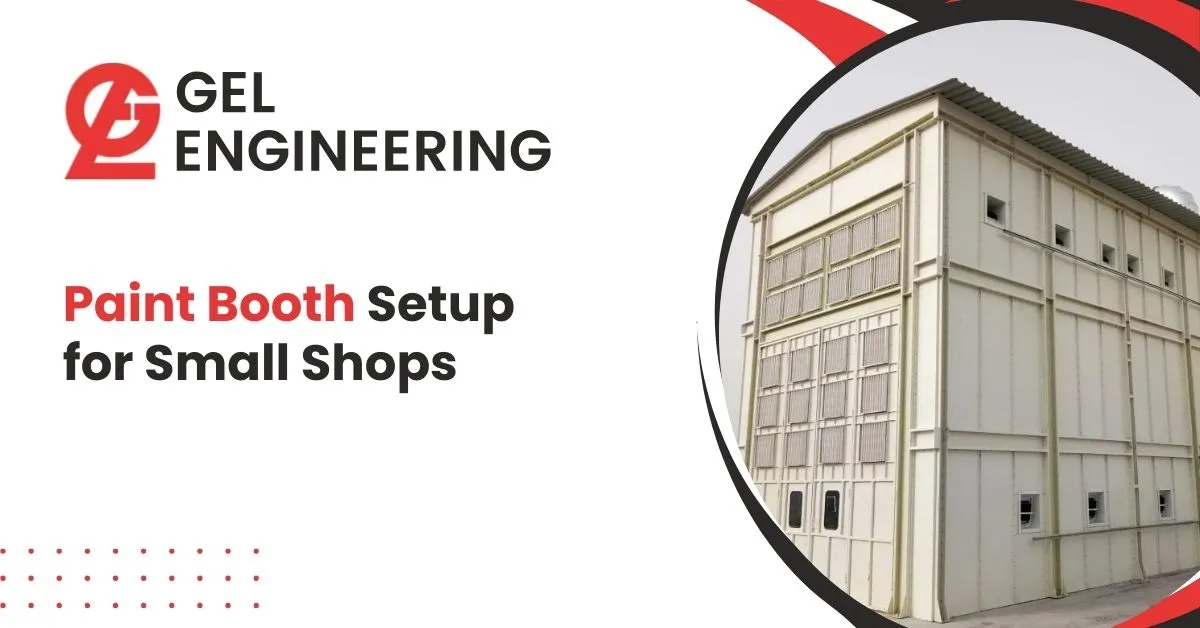Enhance Performance, Safety & Efficiency in Your Spray Painting Process When it comes to industrial…

Paint booths are essential for industries like automotive, aerospace, and manufacturing, providing a controlled environment for painting and coating applications. However, improper handling can pose serious safety hazards, including fire risks, toxic fume exposure, and equipment malfunctions. Following strict safety protocols ensures worker protection, regulatory compliance, and efficient operation.
1. Proper Ventilation
A well-ventilated paint booth is crucial for maintaining air quality and preventing hazardous fume buildup. Ensure that:
- Exhaust systems function properly to remove volatile organic compounds (VOCs).
- Airflow meets regulatory standards to avoid contamination.
- Filters are regularly replaced to maintain efficiency.
Airflow Requirements for Different Booth Types
| Paint Booth Type | Required Airflow (CFM) | Ventilation Type |
| Downdraft Booth | 14,000 – 24,000 | Floor Exhaust |
| Cross draft Booth | 8,000 – 12,000 | Side Exhaust |
| Semi-Downdraft | 10,000 – 18,000 | Rear Exhaust |
| Open-Face Booth | 6,000 – 10,000 | Rear Exhaust |
2. Fire Safety Measures
Flammable materials and electrostatic charges increase the risk of fire in a paint booth. To minimize hazards:
- Store flammable chemicals in approved fire-resistant cabinets.
- Use explosion-proof lighting and electrical systems.
- Install fire suppression systems such as automatic sprinklers or dry chemical extinguishers.
- Ensure proper grounding of spray guns to prevent static buildup.
3. Personal Protective Equipment (PPE)
Workers should always wear appropriate PPE to minimize exposure to harmful chemicals and airborne particles. Essential PPE includes:
- Respirators with appropriate filters
- Nitrile or chemical-resistant gloves
- Fire-resistant coveralls
- Safety goggles or face shields
- Anti-static footwear
Looking for a reliable paint booth? Contact us today for top-quality solutions that ensure safety, efficiency, and compliance!
4. Safe Handling of Paints and Solvents
Proper storage and handling of paints and solvents reduce the risk of spills, fires, and health hazards.
- Keep containers tightly sealed when not in use.
- Store chemicals away from direct heat and sunlight.
- Use spill containment systems for large quantities.
Storage Guidelines for Common Paint Booth Chemicals
| Chemical Type | Storage Requirement | Flashpoint |
| Solvents | Fireproof cabinets with ventilation | Below 100°F |
| Paint Thinners | Away from ignition sources | 104°F |
| Powder Coating | Dry, cool areas with low humidity | Non-flammable |
5. Regular Maintenance and Inspections
Routine maintenance prevents malfunctions and ensures compliance with safety standards.
- Inspect ventilation and exhaust systems weekly.
- Replace filters as per manufacturer recommendations.
- Check for leaks in air compressors and hoses.
- Ensure all fire suppression systems are functional.
6. Compliance with Regulatory Standards
Paint booth operations must comply with OSHA (Occupational Safety and Health Administration) and NFPA (National Fire Protection Association) regulations. Key compliance measures include:
- Properly labelling hazardous chemicals per OSHA’s Hazard Communication Standard.
- Meeting NFPA 33 standards for spray application of flammable materials.
- Providing employee training on safety protocols and emergency procedures.
7. Emergency Preparedness
Even with strict safety measures, emergencies can occur. Preparing for incidents minimizes risks.
- Train employees on emergency evacuation plans.
- Keep fire extinguishers accessible and properly maintained.
- Ensure first aid kits are stocked and easily reachable.
- Conduct regular emergency drills.
Frequently Asked Questions
What are the safety rules for paint booths?
Safety rules include proper ventilation, fire prevention, PPE usage, and compliance with OSHA and NFPA standards.
What are the OSHA regulations for spray paint booths?
OSHA regulations require proper ventilation, explosion-proof equipment, hazardous chemical labelling, and employee safety training.
What safety rules must be kept while painting?
Always wear PPE, ensure proper airflow, store flammable materials safely, and follow fire safety protocols.
What is the NFPA code for paint booths?
The NFPA 33 standard outlines fire safety regulations for spray application of flammable and combustible materials in paint booths.
Conclusion
Following safety guidelines when operating a paint booth is essential for preventing accidents, ensuring worker safety, and maintaining regulatory compliance. By implementing proper ventilation, fire safety measures, PPE usage, and routine maintenance, businesses can create a safe and efficient painting environment.




